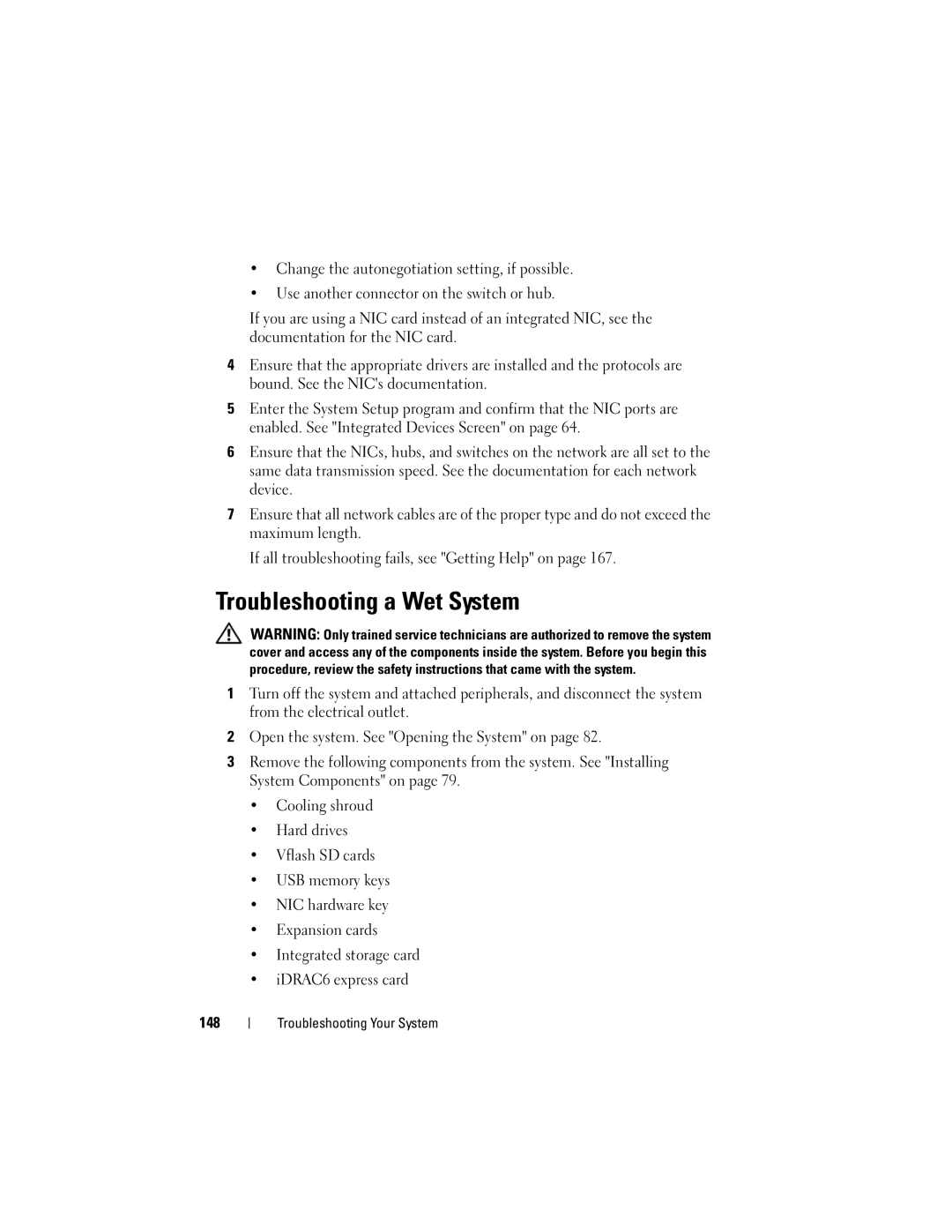•Change the autonegotiation setting, if possible.
•Use another connector on the switch or hub.
If you are using a NIC card instead of an integrated NIC, see the documentation for the NIC card.
4Ensure that the appropriate drivers are installed and the protocols are bound. See the NIC's documentation.
5Enter the System Setup program and confirm that the NIC ports are enabled. See "Integrated Devices Screen" on page 64.
6Ensure that the NICs, hubs, and switches on the network are all set to the same data transmission speed. See the documentation for each network device.
7Ensure that all network cables are of the proper type and do not exceed the maximum length.
If all troubleshooting fails, see "Getting Help" on page 167.
Troubleshooting a Wet System
WARNING: Only trained service technicians are authorized to remove the system cover and access any of the components inside the system. Before you begin this procedure, review the safety instructions that came with the system.
1Turn off the system and attached peripherals, and disconnect the system from the electrical outlet.
2Open the system. See "Opening the System" on page 82.
3Remove the following components from the system. See "Installing System Components" on page 79.
•Cooling shroud
•Hard drives
•Vflash SD cards
•USB memory keys
•NIC hardware key
•Expansion cards
•Integrated storage card
•iDRAC6 express card
148
